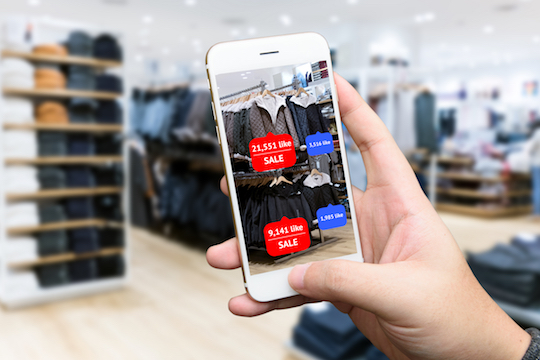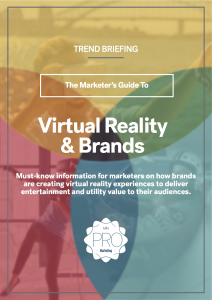Why aren’t marketers using augmented reality?
Share

Luke Kelly outlines the huge opportunities for brands using augmented reality software in 2017.
Pokémon Go illustrated how well augmented reality can be used to delight consumers, engage with fans and increase sales. So why aren’t more Australian brands utilising the software in their marketing campaigns?
Augmented reality can reshape the way people think about your product and experience your brand. The closer you can bring consumers to having an ‘experience’ with your brand, the more likely you are to win their hearts and minds when it comes to purchasing decisions.
Scarcity, not excess, drives demand. Yet many brands think they should wait until there is a more established market for augmented reality. In fact, in an exhausted marketing landscape, the brand who invests first tends to become the market leader in the minds of consumers.
Augmented reality allows consumers and fans to engage with a brand, product or event, and lets them curate their own experiences.
Not to be confused with virtual reality, augmented reality (AR) is a technology that layers computer-generated enhancements over an existing reality (a user’s real-world view), providing an illusion effect, accessible using a smartphone.
Related: Learn more about VR, AR and how brands can alter reality to connect with consumers »
Virtual reality on the other hand, offers a digital recreation of a real life setting. Much like what you experience in dream, VR fully immerses a person as though they are experiencing the simulation directly.
Many brands are hesitant to consider either technology, fearing the costs will make it prohibitive. AR technology is a lot more cost effective than many brands think. The majority of the population already have smart phone technology to use AR, consumers are already familiar with the technology and therefore are more likely to use the platform for the right reward.
In such a saturated market, consumers are fatigued, desperate to be engaged in new and captivating ways.
Giving consumers access to a unique experience is one of the key ways marketers can involve their brands more in consumers’ lives. The short, yet intense popularity of Pokémon Go, has given us a brief insight into how AR can be used on mobile to make the consumer experience more enriching.
Organisations fighting for market share would be wise to consider innovative ways to capture attention using collateral in their own back yard. This is where the possibilities really do become endless.
AR presents myriad opportunities for brands in the FMCG, entertainment, sport, beauty and fashion industries to deliver an experience that competitors would find hard to replicate.
Fashion consumers want to know, how items will this look on themselves or the person they’re buying it for. Footy fans want to know, what’s it’s like to be part of the team.
Imagine for example, if AFL fans could walk onto the grounds of the MCG on a tour and use their phone to watch the players run drills right around them. Die hard AFL fans could be given access to an experience they’d never otherwise have.
Interstate fans of the Australian Open could replay highlights of the games onto their local tennis court through AR on their phones. Time poor consumers could walk into a fashion retailer, scan the stores most popular items, have different outfits projected onto themselves and skip the changing room process entirely.
People are searching for escapism, after all. And a marketer’s job is to create an attainable level of escapism while creating brand value and awareness through experience.
Consumers are significantly under engaged in terms of memorable experiences they really connect with.
Brands have barely scratched the surface when it comes to using augmented reality to engage with consumers. They need to be mindful the information they’ve become so accustomed to can become something new and exciting in the hands of passionate users.
Augmented reality gives consumers unprecedented access to brands, products and experiences, ultimately overcoming barriers to purchases. If you can deliver the brand’s essence while enabling consumers to curate their own experiences or give them a behind-the-scenes sneak peek you’re far more likely to win them over.
All it takes is one bold brand to take the lead. The brands who see this as an opportunity to launch new products in ways that provides value to consumers will be the ones that succeed.
_
Luke Kelly is digital director at HBT Agency
RECOMMENDED READING
The Marketer’s Guide to Virtual Reality
- In-depth analysis of what VR means for brands with input from dozens of experts, companies and perspectives on how this disruptive technology will impact people’s lives and how brands deliver content and value.
- Produced by Marketing Mag’s independent editorial team specifically for Australian & New Zealand.
- Included in Marketing Pro Membership, along with hundreds of other content pieces.
Read a sample of ‘The Marketer’s Guide to Virtual Reality’ »















